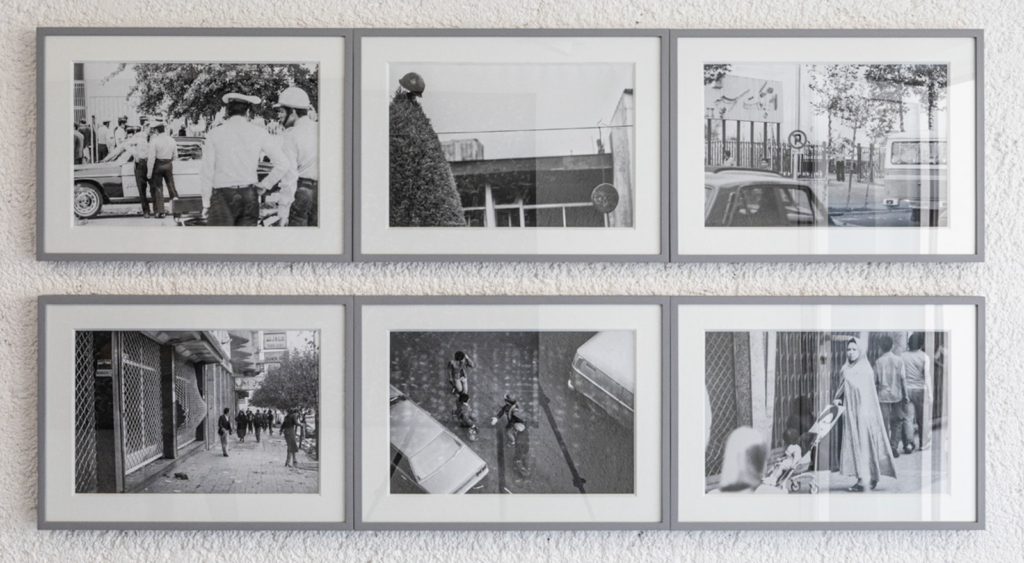With the support of the cinEXmedia partnership, the researcher Claudia Polledri visited the International Institute of Social History in Amsterdam to consult a never-before-seen collection of photographs.

Olivier Du Ruisseau
This summer Claudia Polledri, a researcher with Laboratoire CinéMédias who works on the cinema and photography of the Middle East, particularly in Lebanon and Iran, carried out research at the International Institute of Social History in Amsterdam thanks to the support of the cinEXmedia partnership. There she was able to consult a never-before-seen collection of photographs of the Iranian revolution, taken in 1978 and 1979 by the filmmaker Kamran Shirdel (b. 1939).
Shirdel, seen as a pioneer of the social documentary, is the author of classic works such as the short films Women’s Prison (1965), Women’s Quarter (1966), Tehran is the Capital of Iran (1966) and The Night it Rained (1967), each of them an important document of Iranian society before the revolution.
The collection of photographs deposited in Amsterdam provides access to a body of images Shirdel took at the time of the revolution, part of which was exhibited at the Nabshi arts centre in Tehran from 30 November 2018 to 25 January 2019. The exhibition, entitled Margins – The Revolution in the Wanderings of Kamran Shirdel, was accompanied by an eponymous catalogue.
By following a genetic approach starting from the exhibition and catalogue, Claudia Polledri thus endeavoured to consult the collection of photographs deposited in Amsterdam, with the goal of researching the filmmaker’s photography in greater depth. These photographs had never been consulted before, because until quite recently they had been unavailable to the public.
The Political History of Photography in Iran
“By consulting the archives in which Shirdel’s photographs are found, I hope first of all to draw connections between this never-before-seen collection in Amsterdam and the exhibition and book which arose from it”, Polledri explains. “I ask myself: which images were not exhibited, and why? How are we to understand these choices? Second is the question of analysing Shirdel’s photographic representation of the revolution and the approach that arises out of this. Finally, I consider how to situate Shirdel’s photographs in the broader context of the history of photography in Iran, given the key role played by the revolution in the emergence of an auteur approach to reportage”.
“In fact, during the period of the Shah’s rule”, Polledri adds, “images in Iranian daily newspapers were essentially propagandistic. It was during the revolution in particular, because of the need to document the events unfolding, that an auteur photojournalism emerged”.
Claudia Polledri has in addition devoted an article to this topic, which appeared in issue 31 (2024) of the Lebanese magazine Regards and is entitled “Soulèvements iraniens. Enjeux contemporains du cinéma et des arts visuels en Iran”. This issue of the magazine was co-edited by Polledri with André Habib and Bamchade Pourvali.
Polledri adds that study of the evolution of photograph in connection with protest movements in Iran “represents a very interesting field of exploration. More recently, we have seen major technological changes, including the shift to the digital and the dissemination of images on social media. These technologies have contributed to the support of important movements, such as the Green Movement in 2009 and the uprising following the death of Mahsa Amini in 2022”.
In this sense, research into Shirdel’s photography, “which in itself is a case worthy of study, is part of a broader history which must be taken into account”, Polledri concludes. “Its political implications are always of interest to the present day and lead us to question the role and status of images in an authoritarian context”.

